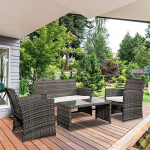Where to Put Your Tank
If you happen to be thinking about buying a rainwater tank for your house or business, then you should get an understanding of exactly what tank size and type you will want. When you’ve worked out just how much rain you need (and are able) to collect, then the next step is to identify a suitable place for a tank that size to reside on your premises.
There are five crucial factors to consider when it comes to selecting the most appropriate place for the water tank you choose:
- Council regulations and requirements on placement
- Pipework setup and installation
- The logistics of the plumbing
- Location area size and tank measurements
- Property appearance and aesthetic
We discuss these in the following article:
1. Council Regulations on Placement

Be sure to check with your local tree arborists for aesthetic integration and your neighbourhood council regulations concerning installing a rainwater tank on your premises. Some regional councils have regulations concerning size and positioning of your tank. For instance:
- many councils will have distance requirements (minimal distance from the property perimeter)
- some may even need your tank to become concealed from view of the road
- some could ask that you set aside storage capability for stormwater detention or even fire-fighting reasons (if at a bushfire prone area).
These conditions could clearly Affect the sort of tank you buy or location on property for installation.
2. Pipework Setup and Installation
It is recommended that you take a walk around the exterior of your home and observe all areas where there are downpipes leading down from the roof. Though your tank does not have to be right alongside a downpipe, picking a location for the tank that’s near one of the downpipes will make it simpler to install the required pipework for your tank.
Putting your tank next to downpipes may also restrict your place choices. Maybe your tanks are positioned on the outside of a path or perhaps up the rear of your residence right in the middle of a garden. You may require stump removal to clear your ideal location.
If you would like to prevent unattractive above ground pipes, an available option is to install the pipes underground to send collected rainwater in your tank. This system will also let you tap into several downpipes for increased rainwater collecting.
3. Pipes and Conditioning Issues
If you’re going to be linking your rainwater tank with the plumbing in your house so that tank water can be available from other places, then it’s a good idea to take into consideration where the majority of your tank water is going to be utilised.
For instance, if your rainwater will be utilised predominantly for your swimming pool or backyard and garden, then ensuring it is close would be most logical. If you’re going to be plumbing your tank water for use in your residence, then it will clearly need much less pipes and installation work if nearer to your property.
Consider too if your home is on an incline or decline, as higher positioned properties are perfect for using a tank. Using gravity will naturally imply that less pump power is needed to push water around your premises. If you are lucky, you may even have the ability to use an entirely gravity-powered system.
4. Location Area Size and Tank Measurements
Assess how much space you have in order to guarantee the water tank you’re thinking about purchasing will fit in the location you have chosen. If you use the right retailer, they should be able to supply many different tank designs and size choices which may help you to overcome space limitations like round tanks, perhaps different slimline water tanks, under-deck and underground tank versions and styles.
It is important to remember that tanks may also be connected together, so if you find that a single big tank does not suit your property then maybe a couple of smaller tanks will do just fine.
In addition, maybe your tank will be perfectly sized, but remember that its elevation does not block windows. Perhaps you’re thinking about putting your tank under a top deck. If this is the case maybe think about squat tanks, as they have a larger diameter and reduced elevation. You may even dig and partially bury larger, taller poly rainwater tanks.
5. Property Appearance and Aesthetic
You clearly won’t need your rainwater tank appearing out of place or become an eyesore due to the location decision you made. To avoid this, perhaps the corrugated ribs provide a fashionable style to the more frequent curved tanks, and together with the numerous colours to pick from you can guarantee your tank fits any surrounding.
If that is not enough, then additionally, there are lots of different methods you can utilise to assist your rainwater tank mixes in with its surroundings.






